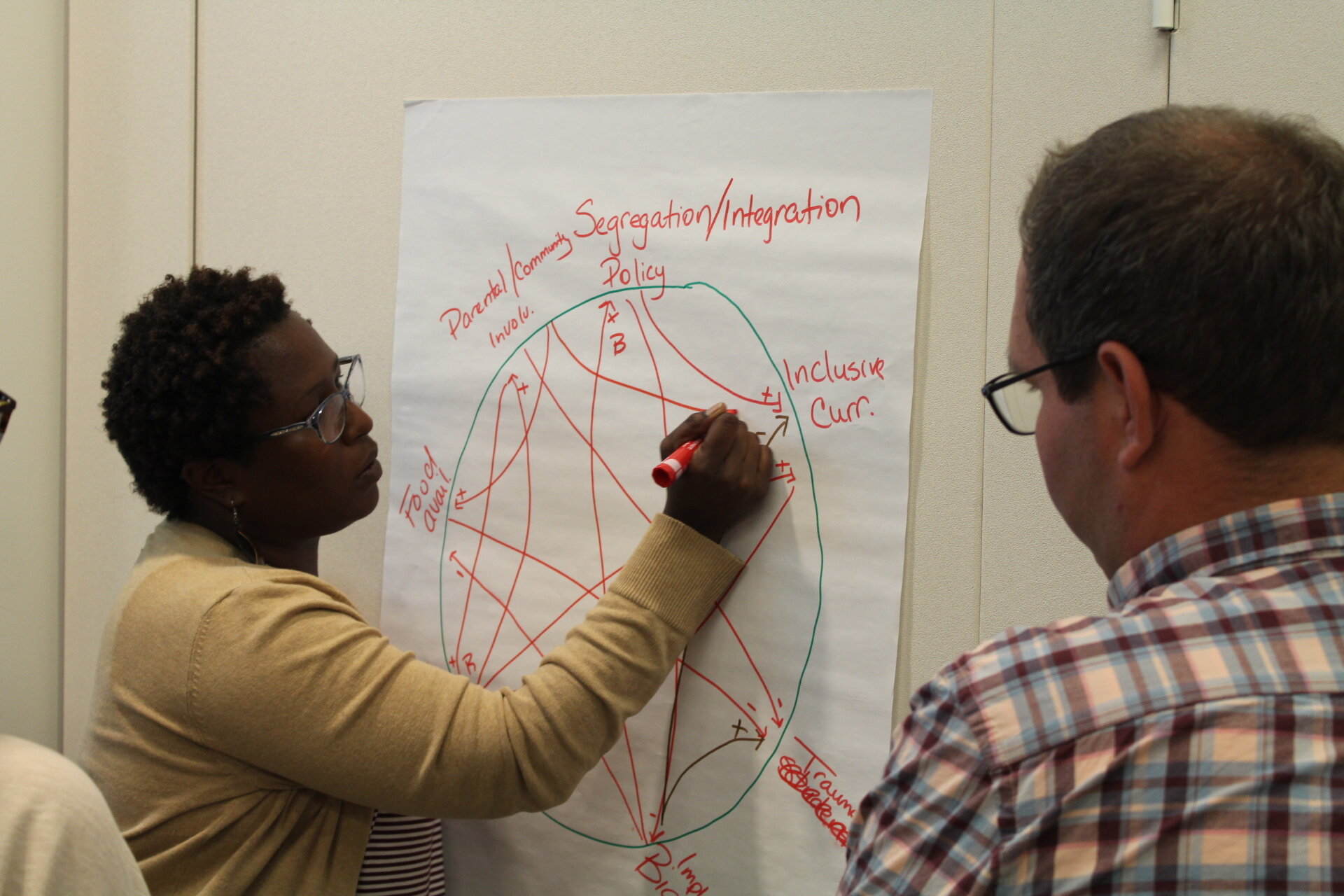
Educators gather for a STEEP workshop.
The Challenge:
The impacts of structural racism permeate all facets of society, including schools. Educators need to understand how systems perpetuate inequity in education in order to combat it. In Saint Louis, teachers in Educators for Social Justice were actively seeking to apply a systems lens to educational equity. However, the pathways to access such training were limited.
The Approach:
A group creates a connection circle.
In 2018, SKIP approached Educators for Social Justice, the Social System Design Lab at the Brown School, and EdHubSTL to imagine what it would look like to create training for teachers who want to address issues surrounding education equity. Working in partnership with EdHub STL, SKIP and the Social Systems Design Lab designed curriculum for teachers, while Educators for Social Justice and EdHubSTL brought together their network of educators for the inaugural cohort of the Systems Thinking For Educational Equity Partnership (STEEP). The goals of STEEP were:
A behavior over time graph showing students experiencing trauma over time.
-
To gain insight into how teachers experience and think about educational equity
-
To prepare teachers to adapt and integrate systems thinking activities/tools into their classrooms
-
To introduce strategies to engage K-12 students in conversations on social justice
-
To create an opportunity for St. Louis educators to build community and collectively problem solve
Over 48 educators from private schools, the Rockwood School District, and Saint Louis Public Schools participated in and learned how to incorporate Community Based System Dynamics into conversations about educational equity in the classroom.
The following year, SKIP partnered to host a second STEEP workshop. Educators again gathered for a weeklong training to explore issues around disciplinary equity in schools. Educators built qualitative system dynamics models to understand why there are disproportionate suspension rates for black and brown children in schools.
The Result:
As a result of these workshops, several educators created their own versions of the curriculum to take back to their schools to have conversations around educational equity. One teacher used behavior over time graphs to discuss immigration in with their social studies students, while an administrator used the tools to examine recruitment rates of children with high poverty backgrounds. Some of the administrators who had participated in the second STEEP workshop hosted another workshop for 30 school administrators from around the Saint Louis region to discuss their role in creating educational equity within the system.
SKIP and the Social Systems Design Lab also created a facilitation guide for teachers and presented the methods and results of the workshops at the International System Dynamics Conference.

An educator looks at behavior over time graphs.

